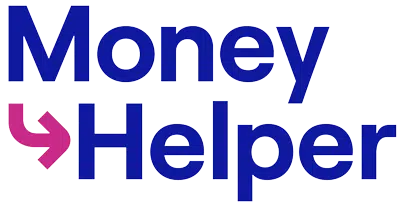
What is Sequestration?
Sequestration is a form of insolvency and the Scottish equivalent of Bankruptcy. If offers relief from debts, when there is no other way to repay them.
Is Sequestration the right option for me?
There are lots of things to take into account when considering Sequestration. The solution will involve selling any assets, including your house, car, and other valuables, to offset your outstanding debts to your creditors. To be considered for Sequestration your outstanding debts must exceed £3000.
How do I apply for Sequestration?
To apply for Sequestration in Scotland, you will need to pay a £150 fee to the Accountant in Bankruptcy and gain the agreement of your creditors, or a certificate of insolvency from an insolvency practitioner (IP). The fee may be waived if you’re assessed to have no surplus income or you receive certain benefits, such as Universal Credits, Child or Working Tax Credits. Once your application is complete you will be protected from legal action brought by your creditors.
To move ahead with Sequestration, you will need a trustee, who is a licensed Insolvency Practitioner, to contact your creditors following your Sequestration’s approval. Your trustee’s fees and costs are taken from the Sequestration funds and your monthly contributions.
Your trustee will review your income and, if applicable, a Debtor Contribution Order (DCO) will be created to make monthly contributions towards your creditors. This contribution will be reviewed every anniversary of your Sequestration.
Sequestration Pros & Cons
Sequestration Pros
- Wipes away all debts included in the plan after a year, allowing you to start over
- Stops legal action from creditors
- You will be allowed enough money to live on
- Creditors can’t reject the Sequestration
- Interest, fees, and charges are frozen
Sequestration Cons
- Possessions, including your house and car, may be repossessed
- There is an initial fee to pay
- Your name will be placed on a public record
- Your credit rating will be negatively impacted for 6 years
- You are required to declare that you re insolvent to anyone you apply to for credit
Am I eligible for Sequestration?
To be eligible for Sequestration you have to:
- Be a Scottish resident
- Not have been bankrupt over the last 5 years
- Have £150 for the application fee
- Have received advice from a money advisor
- Be able to prove you are unable to pay your debts
Living with Sequestration
The sequestration process will usually last around a year, at the end of which, your outstanding debts will be written off. Through the process you will be required to sell valuable assets. It is likely you will need to sell your home to release the equity in it. Similarly, any cars valued above £1000 will need to be sold to pay towards your Sequestration, along with any valuable assets that can be sold.
Once your Sequestration is complete, you will be able to start again with the debts included in the Sequestration officially written off. However, if your trustee deems you can afford a monthly contribution to your creditors, you may need to continue to pay over a period of around 4 years.
Once your Sequestration has ended your credit score will be negatively affected for around 6 years.
Mortgage and renting with Sequestration
Mortgage
If you already own your home it’s likely it will be repossessed as part of your Sequestration. The trustee will calculate the equity in your property and release it for the benefit of your creditors.
If you wish to keep your home it may be possible to relinquish equity through other methods, though if the property has significant equity this would be unlikely. Equity can be released if:
- A friend or family member can pay the equity value
- You enter a mortgage to rent scheme
- You remortgage to release equity
If the equity value of your home is less than £1000, you will not be asked to sell. Instead, you will pay a nominal sum of around £550 to relinquish their interest in the home.
Renting
If you’re up to date on your rent payments, your Sequestration is unlikely to affect an existing tenancy.
If you currently have outstanding rent arrears, these will be included in your Sequestration. Although a landlord can’t take legal action against you, they are able to evict you during this time.
You should note that some tenancy agreements include a bankruptcy clause, meaning the tenancy is terminated if you go bankrupt, or in Scotland, if you go ahead with Sequestration.
You might also find it more difficult to be accepted for future tenancies. In addition to checking credit ratings, many private landlords look at the Insolvency Register when vetting potential tenants. This might put them off entering into an agreement with you, or mean they require a higher deposit or a guarantor.
Will filing for Sequestration stop bailiffs?
When you file for Sequestration, any previous debt recovery or legal actions taken by your creditors must be logged. When you are officially declared bankrupt, you are granted legal protection that means your creditors aren’t allowed to make direct contact with you. This includes using bailiffs.
Alternatives to Sequestration.
If you think this debt solution might be a good option for you, contact our expert team for Sequestration advice. It’s important to be aware that there are alternatives available, and you will need to do your research and due diligence before you decide which route is right for you. Our specialists can provide you with all the Sequestration help and information you need.
Protected Trust Deed
A formal debt solution, for residents of Scotland, that’s intended to remove the pressure of unmanageable debts, by combining them into a single monthly payment.
Minimal Asset Process (MAP)
A Minimal Asset Process (MAP) is a type of Sequestration for people living in Scotland who don’t have assets or surplus income to repay their debts. It lasts for six months, during which time all interest and charges on your debts are frozen.
Debt Management Plan
A Debt Management Plan is an informal agreement that you come to with your creditors to repay the money you owe at a rate that is affordable to you. You make smaller, single monthly payments without taking on additional debt.
Debt Relief Order (DRO)
An alternative to Bankruptcy available to people with debts lower than £50,000 and less than £75 per month in disposable income, a DRO offers an opportunity to take a break from debt repayments in the hope your financial situation improves.
Sequestration FAQs
Sequestration and work can be closely linked, depending on your job. In most professions, being declared bankrupt in Scotland (known as sequestration) won’t affect your employment directly. However, there are exceptions.
You may face restrictions if you work in financial services, law or accountancy, or if your role involves managing money. In some cases, your employment contract may require you to disclose your financial status, and sequestration could put your job at risk.
If you’re unsure of the job impact of sequestration, check your employment contract or speak to your HR department. You can also contact a debt adviser for confidential guidance on what to expect in your specific line of work.
In Scotland, sequestration (the Scottish term for bankruptcy) usually lasts one year. After this period, you are discharged, but some financial obligations may continue, such as paying a contribution from your income, for up to four years.
The exact sequestration duration in Scotland depends on your circumstances. For example, if you don’t cooperate with your trustee or fail to disclose key information, your discharge could be delayed and restrictions may be extended.
Even after discharge, sequestration will stay on your credit file for six years, which can affect your ability to get credit or take out a mortgage. During this time, it’s important to manage your money carefully and seek support if needed.


For free debt advice, you can visit www.moneyhelper.org.uk. You can also read more about your options for paying off your debt here.
